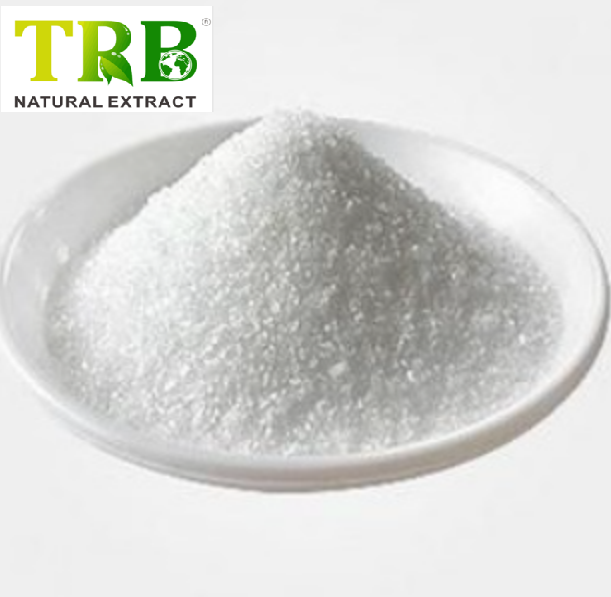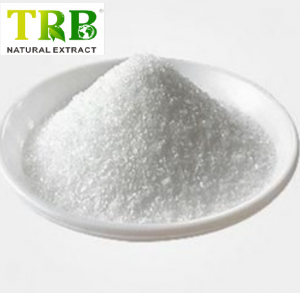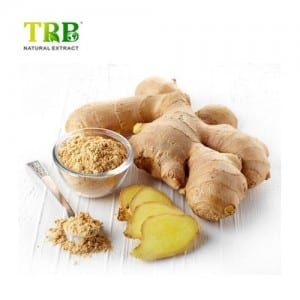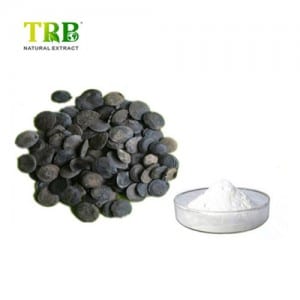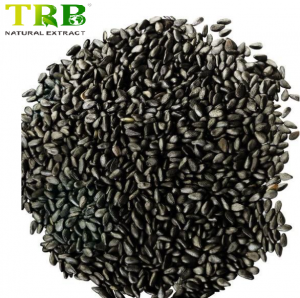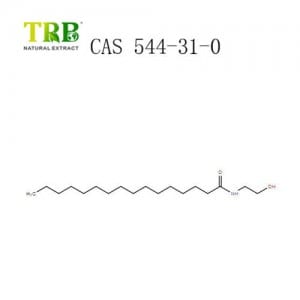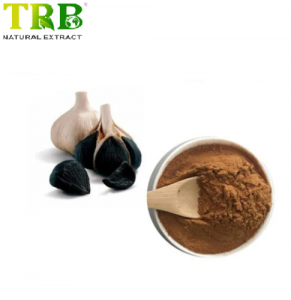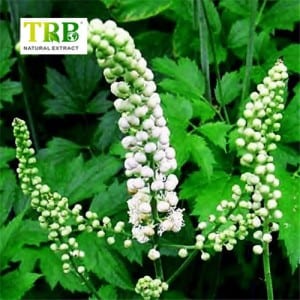Inositol (hexahydroxycyclohexane) jẹ ẹya adayeba ti o pin kaakiri ti ọgbin ati awọn ẹran ara ẹranko.Awọn ẹran ara ti o ni ọlọrọ julọ niinositoljẹ ọpọlọ, ọkan, ikun, kidinrin, Ọlọ, ati ẹdọ, nibiti o ti waye ni ọfẹ tabi gẹgẹbi paati phospholipids.Lara awọn irugbin, awọn woro irugbin jẹ awọn orisun ọlọrọ ti inositol, ni pataki ni irisi awọn esters polyphosphoric acid, ti a pe ni phytic acids.Botilẹjẹpe ọpọlọpọ awọn isomers optically ti nṣiṣe lọwọ ati aiṣiṣẹ wa, awọn akiyesi ti inositol bi aropọ ounjẹ tọka si ni pataki cis-1,2,3,5-trans-4,6-cyclohexanehexol, eyiti a yan ni pataki myo-inositol.Inositol mimọ jẹ iduroṣinṣin, funfun, didùn, yellow crystalline.Codex Kemikali Ounje ṣe alaye pe ko din ju 97.0 ogorun, yo laarin 224 ati 227 °, ko si ni diẹ sii ju 3 ppm arsenic, 10 ppm lead, 20 ppm eru awọn irin (bi Pb), 60 ppm sulfate, ati 50 ppm kiloraidi.Inositol ni a ro fun akoko kan lati jẹ Vitamin nitori awọn ẹranko adanwo lori ounjẹ sintetiki ni idagbasoke awọn ami iwosan ti a ṣe atunṣe nipasẹ afikun inositol.Sibẹsibẹ, ko si cofactor tabi iṣẹ catalytic fun inositol ti a ti rii;o le ti wa ni sise ati ki o waye ni jo ga fojusi ninu eranko tissues.Awọn ifosiwewe wọnyi jiyan lodi si ipinya rẹ bi Vitamin.Ibeere ti ijẹẹmu ninu eniyan ko ti fi idi mulẹ.
Orukọ ọja: Inositol
Ni pato: Min 97.0%
Awọn ohun-ini Kemikali: Kirisita funfun tabi lulú kristali, ailarun, ati didùn;Ojulumo iwuwo: 1.752 (anhydrous), 1.524 (dihydrate), mp 225 ~ 227 ℃ (anhydrous), 218 °C (dihydrate), farabale ojuami 319 °C.Tituka ninu omi (25 °C, 14g/100mL; 60 °C, 28g/100mL), die-die tiotuka ninu ethanol, acetic acid, ethylene glycol ati glycerol, insoluble in ether, acetone ati chloroform.Idurosinsin ni afẹfẹ;Idurosinsin si ooru, acid ati alkali, sugbon jẹ hygroscopic.
CAS No: 87-89-8
Itupalẹ akoonu: Ṣe iwọn deede ayẹwo miligiramu 200 (ti a ti gbẹ tẹlẹ ni 105°C fun wakati 4), ki o si gbe e sinu iyẹfun 250ml.Fi 5ml ti adalu laarin ọkan sulfuric acid (TS-241) ojutu idanwo ati 50 acetic anhydride, ati lẹhinna bo gilasi aago naa.Lẹhin alapapo lori iwẹ nya si fun iṣẹju 20, tutu lori iwẹ yinyin, fi omi 100ml kun, ati sise 20min.Lẹhin itutu agbaiye, gbe ayẹwo naa sinu 250 milimita ti o ya sọtọ eefin nipa lilo iye kekere ti omi.Lo 30, 25, 20, 15, 10 ati 5 milimita ti chloroform ni aṣeyọri lati yọ ojutu naa jade fun igba mẹfa (akọkọ fọ beaker naa).Gbogbo jade chloroform ni a kojọ ni aaye iyapa 250m1 keji.Wẹ jade adalu pẹlu 10ml ti omi.Fi ojutu chloroform silẹ nipasẹ irun-agutan funnel owu kan ki o gbe lọ si 150ml ti a ṣaju-iṣuwọn ọpọn Soxhlet kan.Lo 10ml ti chloroform lati wẹ eefin ipinya ati funnel, ati dapọ si jade.Gbe e si gbigbẹ lori iwẹ nya si, lẹhinna gbe lọ si adiro ni 105 °C fun gbigbe 1h.Tutu rẹ ni ẹrọ mimu, ki o wọn wọn.Lo iye ti a gba ti mẹfa inositol acetate isodipupo nipasẹ 0.4167, eyun iye ti o baamu ti inositol (C6H12O6).
Iṣẹ:
1. Bi awọn afikun ounjẹ, ni ipa kanna si Vitamin B1.O le ṣee lo fun awọn ounjẹ ọmọde ati lo ni iye ti 210 ~ 250mg / kg;Ti a lo ninu mimu ni iye ti 25 ~ 30mg / kg.
2. Inositol jẹ Vitamin ti ko ṣe pataki fun iṣelọpọ ọra ninu ara.O le ṣe igbelaruge gbigba ti awọn oogun hypolipidemic ati awọn vitamin.Pẹlupẹlu, o le ṣe igbelaruge idagbasoke sẹẹli ati iṣelọpọ ọra ninu ẹdọ ati awọn ara miiran.O le ṣee lo fun itọju adjuvant ti ẹdọ ọra, idaabobo awọ giga.O ti wa ni lilo pupọ ni ounjẹ ati awọn afikun ifunni, ati pe nigbagbogbo ni afikun si ẹja, ede ati ifunni ẹran-ọsin.Iwọn naa jẹ 350-500mg / kg.
3. Ọja naa jẹ ọkan ninu iru Vitamin B eka, eyiti o le ṣe igbelaruge iṣelọpọ sẹẹli, mu awọn ipo ijẹẹmu sẹẹli mu, ati pe o le ṣe alabapin si idagbasoke, alekun igbadun, lati tun pada.Jubẹlọ, o le se awọn ikojọpọ ti sanra ninu ẹdọ, ki o si mu yara awọn ilana ti yọ excess sanra ni okan.O ni iru iṣẹ-ọra-chemotactic ti o jọra bi choline, ati nitorinaa o wulo ni itọju ti arun ti o pọju ọra ẹdọ ati cirrhosis ti arun ẹdọ.Gẹgẹbi "lilo olodi ounje ti awọn iṣedede ilera (1993)" (Ifunni nipasẹ Ile-iṣẹ ti Ilera ti China), o le ṣee lo fun ounjẹ ọmọde ati awọn ohun mimu olodi ni iye 380-790mg / kg.O jẹ awọn oogun kilasi Vitamin ati oogun ti o dinku ọra eyiti o ṣe agbega iṣelọpọ ọra ti ẹdọ ati awọn tissu miiran, ati pe o wulo fun itọju adjuvant ti ẹdọ ọra ati idaabobo awọ giga.O jẹ lilo pupọ ni awọn afikun ounjẹ ati ohun mimu.
4. Inositol jẹ lilo pupọ ni oogun, kemikali, ounjẹ, bbl O ni ipa to dara lori atọju awọn arun bii cirrhosis ẹdọ.O tun le lo fun awọn ohun elo aise ohun ikunra ti ilọsiwaju, pẹlu iye ọrọ-aje giga.
5. O le ṣee lo bi reagent biokemika ati tun fun elegbogi ati iṣelọpọ Organic;O le dinku idaabobo awọ ati ni ipa sedative.
| Alaye siwaju sii ti TRB | ||
| Regulation iwe eri | ||
| USFDA,CEP,KOSHER HALAL GMP ISO Awọn iwe-ẹri | ||
| Didara ti o gbẹkẹle | ||
| O fẹrẹ to ọdun 20, okeere awọn orilẹ-ede 40 ati awọn agbegbe, diẹ sii ju awọn ipele 2000 ti a ṣe nipasẹ TRB ko ni awọn iṣoro didara eyikeyi, ilana isọdọmọ alailẹgbẹ, aimọ ati iṣakoso mimọ pade USP, EP ati CP | ||
| Okeerẹ Didara System | ||
|
| ▲ Eto idaniloju Didara | √ |
| ▲ Iṣakoso iwe | √ | |
| ▲ Eto Afọwọsi | √ | |
| ▲ Eto Ikẹkọ | √ | |
| ▲ Ilana iṣayẹwo inu inu | √ | |
| ▲ Suppler Audit System | √ | |
| ▲ Eto Ohun elo Ohun elo | √ | |
| ▲ Eto Iṣakoso Ohun elo | √ | |
| ▲ Eto Iṣakoso iṣelọpọ | √ | |
| ▲ Packaging Labeling System | √ | |
| ▲ Eto Iṣakoso yàrá | √ | |
| ▲ Afọwọsi Eto | √ | |
| ▲ Regulatory Affairs System | √ | |
| Ṣakoso Gbogbo Awọn orisun ati Awọn ilana | ||
| Ti ṣakoso ni pipe gbogbo awọn ohun elo aise, awọn ẹya ẹrọ ati awọn ohun elo iṣakojọpọ.Awọn ohun elo aise ti o fẹ ati awọn ẹya ẹrọ ati olupese awọn ohun elo apoti pẹlu nọmba DMF AMẸRIKA.Ọpọlọpọ awọn olupese ohun elo aise bi idaniloju ipese. | ||
| Awọn ile-iṣẹ ifowosowopo ti o lagbara lati ṣe atilẹyin | ||
| Institute of Botany/Ile-ẹkọ ti microbiology/Academy of Science and Technology/University | ||
